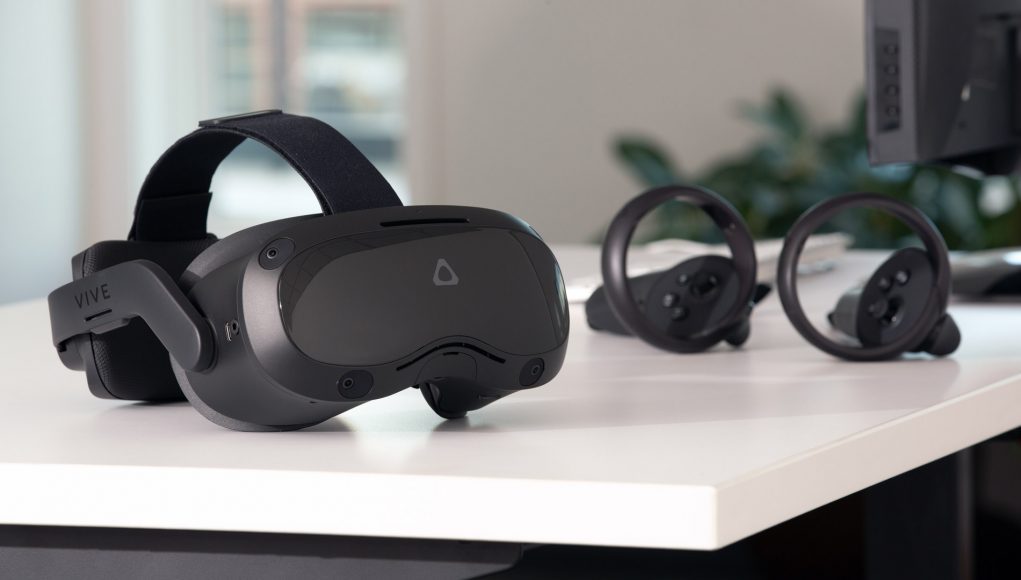HTC launched Vive Focus 3 back in late June, a high-end VR standalone with a price tag to match its ambitions as a device meant for businesses. The company recently announced updates to the software experience that will bring a host of improvements, such as support for the new WiFi 6E standard, larger tracking areas, a shared map for easier playspace calibration, and more.
The company announced the full gamut of info in a blogpost. As it is, here’s a quick rundown of the major updates HTC is bringing to Vive Focus 3:
Better PC VR Streaming with WiFi 6E
WiFi 6E is a new standard that operates at the 6 GHz frequency range, and offers a low latency and high bandwidth wireless connection for streaming PC VR content to the standalone headset.
Occupying a different frequency also helps mitigate background WiFi interference. As HTC’s Shen Ye points out, going from WiFi 6 (5GHz) to WiFi 6E allows for a total of 59 separate 20MHz channels, or 7 separate 160 MHz channels. Certification is coming soon, although availability may vary based on your geographic location.
Location-based Entertainment Mode
Location-based Entertainment (LBE) Mode was developed to enlarge the Vive Focus 3’s standard tracking area to make it easier for businesses to make the best of large spaces.
Vive Focus 3 supports a 15m × 15m space out of the box (50ft × 50ft), but LBE mode bumps that up to 33m × 30m (100ft × 108ft). That’s roughly the size of four tennis courts, which opens up more flexibility for VR arcades implementing larger format free-roaming games.
Map Sharing
The new Map Sharing feature lets multiple users share inside-out maps of a given space so you don’t need to setup or calibrate multiple headsets.
This also includes the ability to duplicate a few things specifically from one to all headsets in a group: single boundary/direction/center of map/floor height.
Visual Odometry Mode
Visual Odometry (VO) Mode is a handy shortcut so you can skip the 5-minute tracking set-up, letting users jump straight into the experience without having to draw the tracking volume. It does this by automatically setting the Direction of View and Center of Coordination once a user puts on the headset.
Ye mentions that VO mode is great for experiences where large-scale tracking isn’t really relevant, like single-player arcade games with a static playspace, athletic training, and more simple content viewing.
Conveniently, HTC has made a Hybrid Mode that incorporates both VO and LBE Mode. Start in VO mode for fitting adjustments, and then head into LBE mode to transition to the large-scale experience.
– – — – –
Check out HTC Vive Focus 3 specs below. You can learn more about HTC’s latest standalone here.
| Vive Focus 3 Specs | |
| Resolution | 2,448 x 2,448 (6.0MP) per-eye, LCD (2x) |
| Refresh Rate | 90Hz |
| Lenses | Dual-element Fresnel |
| Field-of-view | 120° horizontal |
| Optical Adjustments | IPD |
| IPD Adjustment Range | 57–72mm |
| Processor | Snapdragon XR2 |
| RAM | 8GB |
| Storage | 128GB (expandable via MicroSD to 2TB) |
| Connectors | USB-C (2x) |
| Battery Life | 2 hours |
| Tracking | Quad on-board camera (no external beacons) |
| Controllers | Vive Focus 3 controllers, rechargeable battery |
| Audio | In-headstrap speakers, 3.5mm aux output |
| Microphone | Dual microphone |
| Pass-through Cameras | Yes |







